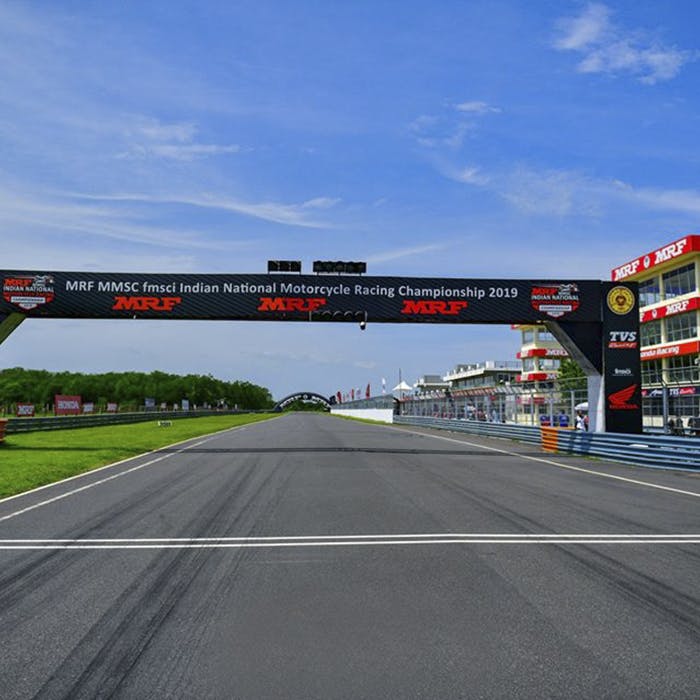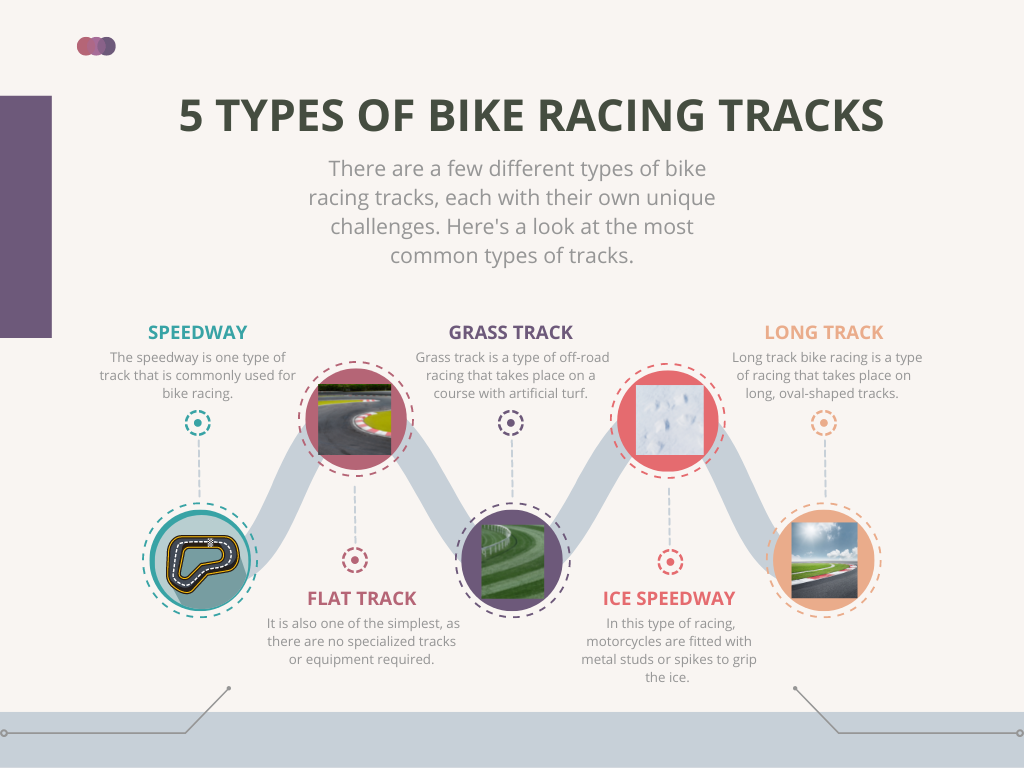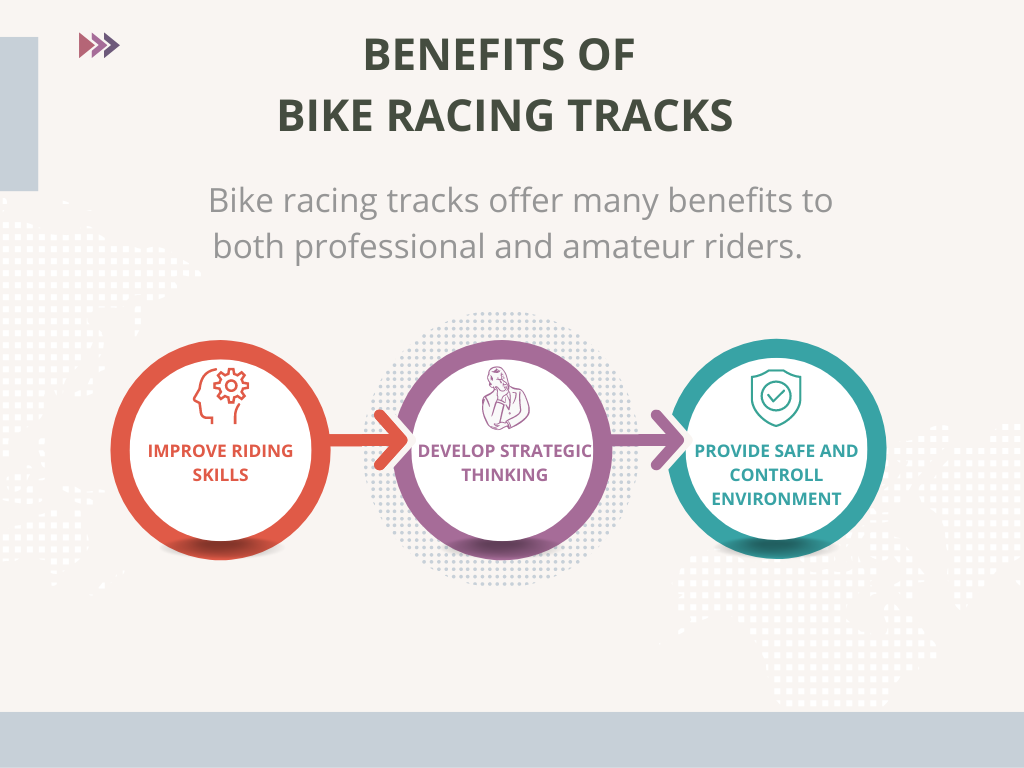If you’re thinking about getting into bike racing, you may be wondering what kind of tracks are out there. For the most part, bike racing takes place on either road or off-road courses. However, there is a wide variety of both types of tracks. In this blog post, we will explore 5 different types of bike racing tracks. From short track to long track, road to off-road, there is a track out there for everyone. So whether you’re a beginner or a professional, read on to find the perfect course for you.
Bike racing tracks
Bike racing tracks are built for one thing – speed. They are designed to be as flat and smooth as possible, with long straights and wide corners to allow riders to push their bikes to the limit. There are a few different types of bike racing tracks, depending on the discipline of racing. Whether you are a seasoned bike racer or a first-time track rider, finding the right racing track is essential to your success on the track. In this blog, We share different types of Bike Racing Tracks for your racing.

5 Types of Bike Racing Tracks
There are a few different types of bike racing tracks, each with their own unique challenges. Here’s a look at the most common types of tracks.
- Speedway
- Flat track
- Grass track
- Ice speedway
- Long track

1. Speedway
Bike racing is a popular sport with many different types of tracks available for racing. The speedway is one type of track that is commonly used for bike racing. This type of track is typically oval in shape and has a smooth surface. The speedway is designed to allow racers to reach high speeds and to provide a challenging and exciting race.
2. Flat track
Flat track bike racing is one of the oldest and most popular forms of motorcycle racing. It is also one of the simplest, as there are no specialized tracks or equipment required – just a flat, smooth surface. Flat track races take place on oval-shaped dirt tracks, with two riders starting side-by-side and racing for a set number of laps. The first racer to cross the finish line wins. There are many different classes of flat track racing, from amateur to professional, and racers of all ages and abilities can enjoy the sport.
3. Grass track
There are many different types of bike racing tracks, but one of the most popular is the grass track. Grass track racing is a type of off-road racing that takes place on a course with natural or artificial turf. Grass track courses can be found in parks, forests, fields, and even on beaches. Grass track racing is a great way to get into off-road racing because it doesn’t require expensive equipment or specialized skills. All you need is a mountain bike or a cross-bike and you’re good to go. Grass track races are typically shorter than other off-road races, making them perfect for beginners who want to give off-road racing a try.
4. Ice speedway
Since the early 1900s, ice speedway has been a popular winter sport in countries with a cold climate. In this type of racing, motorcycles are fitted with metal studs or spikes to grip the ice. The races are held on an oval track that is typically 400 to 600 meters long. Ice speedway races are usually held as part of a larger event that includes other sports such as hockey or figure skating. The racing is typically divided into heats, with each heat consisting of four laps around the track. The winner of each heat advances to the next round until there is a final race between the two fastest racers. Ice speedway racing is a dangerous sport due to the high speeds and slippery conditions. Riders often crash and slide across the ice, which can lead to serious injuries. Nonetheless, it remains a popular spectator sport and attracts some of the world’s best racers.
5. Long track
Long track bike racing is a type of racing that takes place on long, oval-shaped tracks. These tracks are typically 1/2 to 1 mile in length, and they can be made out of concrete, asphalt, or dirt. Long track racing is one of the most popular forms of bike racing in the United States, and it’s also one of the most dangerous. That’s because riders reach high speeds on these tracks, and there’s little room for error. If you make a mistake while riding on a long track, you could easily crash into the wall or another racer.
Importance of bike racing tracks
Bike racing tracks are important because they provide a safe and controlled environment for riders to race in. Tracks also give riders the opportunity to practice and improve their skills. Racing tracks are designed to be as safe as possible, with wide turns and smooth surfaces. This minimizes the risk of crashes and injuries. Tracks also provide an opportunity for riders to test their limits and push themselves to the next level. Racing against others helps racers to learn what they are capable of and where they need to improve. Bike racing tracks are an essential part of the sport of motorcycle racing. They provide a safe place for racers to compete, while also giving them the chance to practice and improve their skills.
Benefits of bike racing tracks
Bike racing tracks offer many benefits to both professional and amateur riders. For professional riders, tracks provide a safe and controlled environment in which to train and compete. Tracks also offer opportunities for riders to test their skills against other riders of similar ability. Amateur riders can use tracks to improve their riding skills and confidence. Tracks can vary in length and difficulty, so there is something to suit all racers. They are also usually well-maintained, so riders can be sure that they are riding on a safe and smooth surface. Racing on a track can help racers to improve their cornering technique and learn how to take corners at higher speeds. This is because tracks are designed specifically for bike racing, with tight corners and long straights that allow riders to build up speed. Racing on a track can also help racers to develop strategic thinking, as they need to plan their race line in order to maximize their speed through the corners.

Conclusion
Bike racing tracks come in all shapes and sizes, each with its own unique challenges. By understanding the different types of bike racing tracks, you can better prepare yourself for your next race. Whether you’re looking for a fast and flat course or something more technical and hilly, there’s a track out there that’s perfect for you. So get out there and start exploring!

